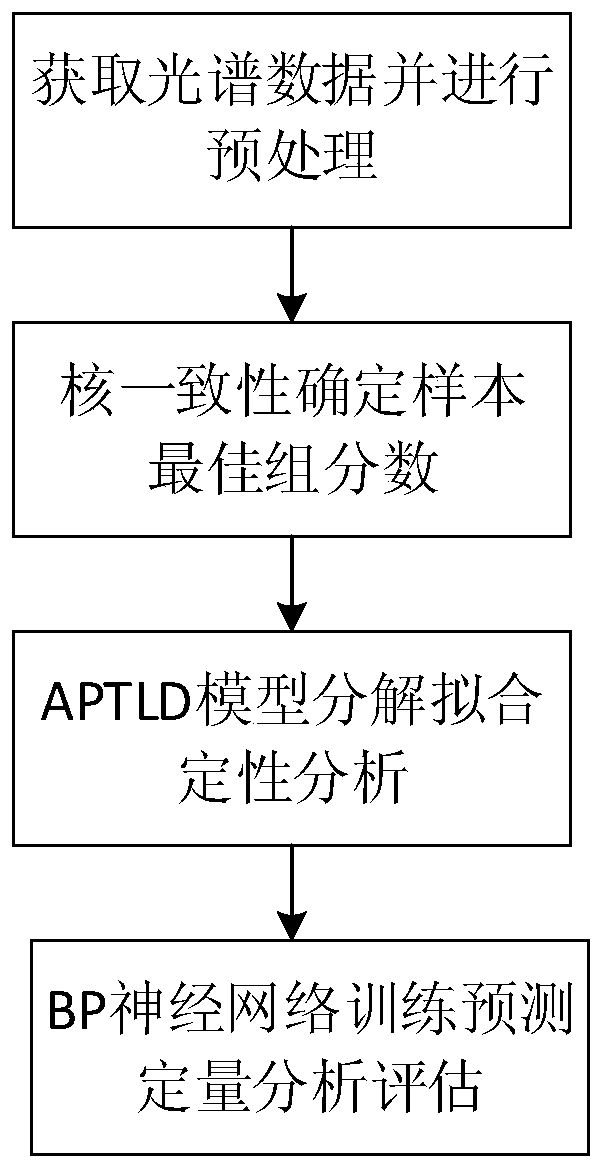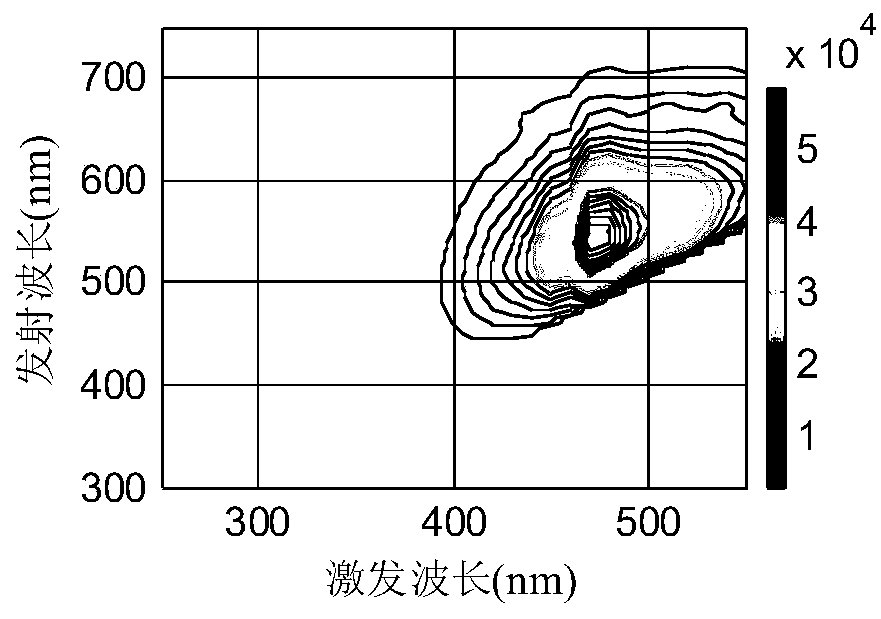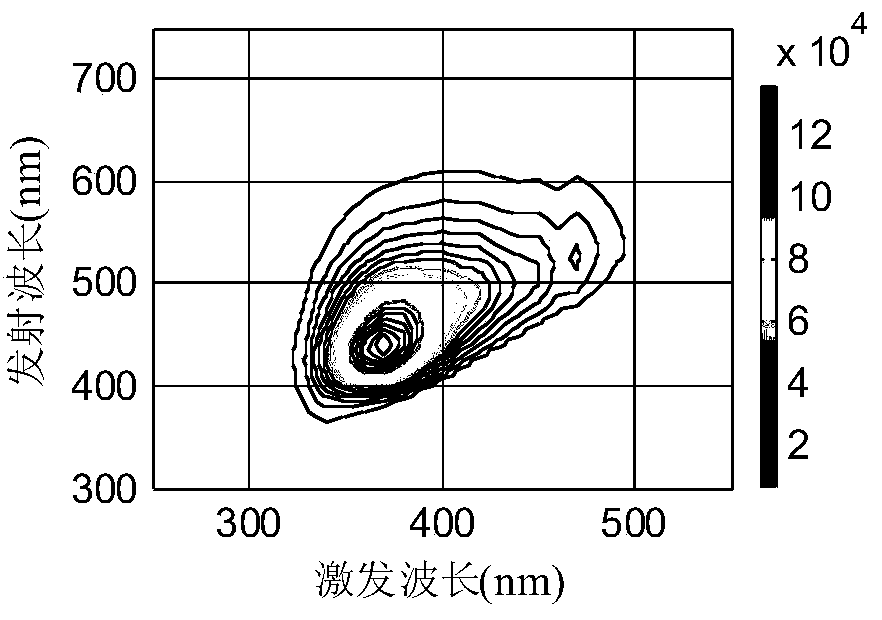Vegetable oil pesticide residue detection method based on three-dimensional fluorescence spectroscopic technology
A pesticide residue detection and three-dimensional fluorescence technology, applied in the field of fluorescence spectrum analysis, can solve problems such as poor detection accuracy, and achieve the effects of rapid detection, small sample volume and high sensitivity
- Summary
- Abstract
- Description
- Claims
- Application Information
AI Technical Summary
Problems solved by technology
Method used
Image
Examples
Embodiment Construction
[0041] Exemplary embodiments, features, and performance aspects of the present invention will be described in detail below with reference to the accompanying drawings. The same reference numbers in the figures indicate functionally identical or similar elements. While various aspects of the embodiments are shown in drawings, the drawings are not necessarily drawn to scale unless specifically indicated.
[0042] Such as figure 1 Shown, method step of the present invention is as follows:
[0043] Step 1. In this example, sesame oil and 1-(methylthio)ethylene aminomethyl carbamate, namely the pesticide methomyl (emulsifiable oil state) were taken as the research objects, and different amounts of Methomyl was prepared with 18 groups of sesame oil pesticide residue samples with different concentrations and ratios, which were divided into 15 groups of calibration samples, marked as cal1 to cal15, and 3 groups of test samples, marked as test1 to test3, as shown in Table 1. Select ...
PUM
 Login to View More
Login to View More Abstract
Description
Claims
Application Information
 Login to View More
Login to View More - R&D
- Intellectual Property
- Life Sciences
- Materials
- Tech Scout
- Unparalleled Data Quality
- Higher Quality Content
- 60% Fewer Hallucinations
Browse by: Latest US Patents, China's latest patents, Technical Efficacy Thesaurus, Application Domain, Technology Topic, Popular Technical Reports.
© 2025 PatSnap. All rights reserved.Legal|Privacy policy|Modern Slavery Act Transparency Statement|Sitemap|About US| Contact US: help@patsnap.com



